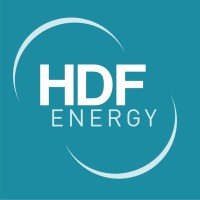Frontier Energy identifies multiple water solutions for hydrogen production
As part of the Green Hydrogen Study, preliminary results have identified multiple existing solutions for water sources suitable for use in the Southwest of Western Australia.

Frontier Energy Limited has announced preliminary results from the Green Hydrogen Study have identified numerous existing water sources suitable for green hydrogen production near the Company’s Bristol Springs Solar Project (the BSS Project).
Accessing an existing water solution means the development of a desalination plant is not required. This significantly reduces both the capital and operating costs as well as the development timeline.
Without access to a suitable existing water solution developing a desalination plant is required. Whilst this technology is well understood, it can add hundreds of millions of dollars to a project’s initial capital cost (depending on its size) as well as increase the operating costs. The development of a desalination plant will also slow a project’s development timeline, given the stringent environmental and development conditions to be met.
The location of our Bristol Springs Project has again given Frontier a major advantage over others with multiple options throughout the region for existing water access. Being on the SWIS allows the Company to transfer our green electron’s to the most suitably located hydrogen facility.
As part of the Company’s long-term strategy to become vertically integrated across the green hydrogen industry, it engaged leading global energy consultancy Xodus Group, to complete a Green Hydrogen Study.
One of the key elements for green hydrogen production is access to purified water. Xodus performed a water-related technology assessment across water import, treatment and disposal.
Given the Study assumes power will be sourced from the BSS Project and it is connected to the Southwest Interconnected System (SWIS), the electricity grid covering the southwest of Western Australia, there is the potential for the green electrons to be transferred anywhere across the region. This provides greater flexibility regarding a location for a future hydrogen facility.
Given this and the forecast water consumption of approximately 0.2GL, for the initial facility being considered, the following existing solutions were considered as offering both suitable water as well as sufficient capacity.
- Yarragadee freshwater aquifer
- Bunbury Wastewater Treatment plant
- Existing desalination in Kwinana and Bunningup
The Bunbury Wastewater Treatment plant (BWWT) is located 7 km south of Bunbury and currently treats an average volumetric flow of 13,000kL/day wastewater using the trickling filter system.
Xodus identified the potential to use the treated wastewater from the BWWT as feedstock and to further alleviate high pipeline costs due to extensive piping requirements. It is recommended that the hydrogen production facility physically extract the water from the nearby Yarragadee freshwater aquifer. This strategy entails a virtual pipeline model whereby the hydrogen electrolyser water usage can be offset by adopting groundwater replenishment technology.
This will entail injecting drinking-water-quality treated wastewater into the Yarragadee aquifer at a location proximate to the BWWT and extracting fresh water from the aquifer at the hydrogen production plant location.
Australia’s first full-scale Groundwater Replenishment Scheme is located in Perth’s northern suburbs, Western Australia. It started recharging recycled water to Perth’s deep aquifers in 2017.
